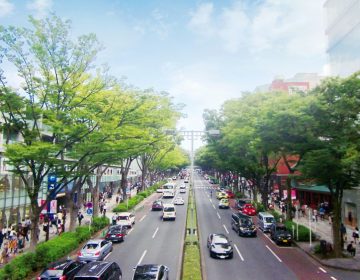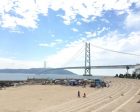
Here are some of the classic and lesser-known power spots in Tokyo! Visit these power spots while driving on a rental car. They are also recommended for sightseeing!
Classic power spots in the city such as Senso-ji and Meiji Jingu! Go a little farther to visit relaxing places surrounded by nature! Introducing a wide range of spots to enjoy!
Article published by: Jalan Rent-a-Car
* Introduced facilities are excerpted from Jalan.net Sightseeing Guide
* Posted information and photos may not be up to date. Please confirm on your own before visiting the facilities.
Meiji Shrine
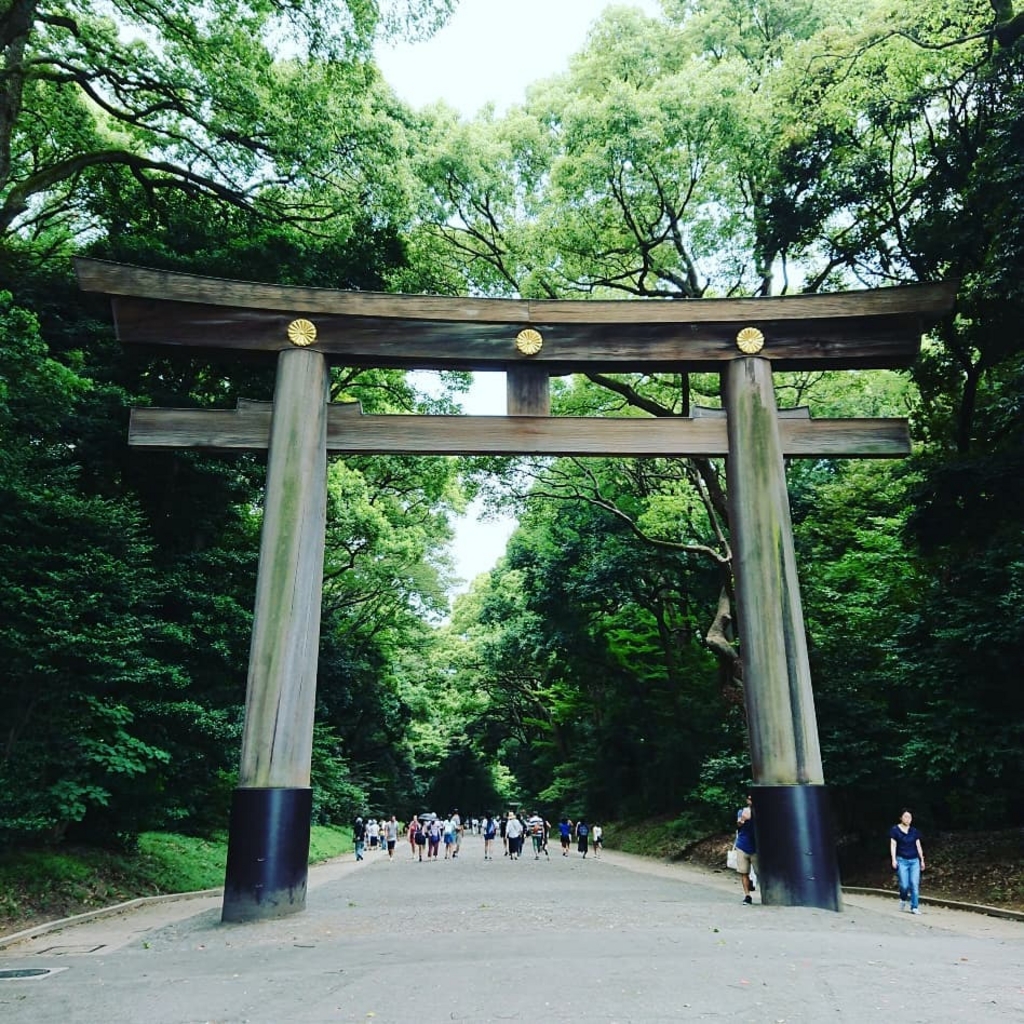
Source:Jalan Tourist Guide Meiji Shrine
\Reviews/
It’s amazing that there’s a place so grand and mysterious in the metropolis of Tokyo. You don’t have to do anything, just being there will already make you feel refreshed.
(Date of visit: September 2018)
I’ve been visiting this shrine since I was a child. There’s a special atmosphere that makes me feel like I must behave properly. I understand why there are many famous people who choose to have wedding ceremonies here. I recommend visiting this place when in need of some energy. You’re guaranteed to feel a sense of relief.
(Date of visit: October 1, 2018)
Address: 1-1 Yoyogikamizono-cho, Shibuya-ku, Tokyo 151-8557
Other Information: Established in 1920
Phone: 03-3379-5511
Website: http://www.meijijingu.or.jp
Kanoto Rock

Source:Jalan Tourist Guide Kanoto Rock
A natural monument of Tokyo, it is group of big rocks that sandwich a river where a clear stream of water meanders through.
\Reviews/
This is a little-known power spot that is located in the northern section of Hinohara Village. If you go by car, you can stop at a point that is near this spot and then it will be an approximately 20-minute walk to and from the car to this spot. It is a power spot in the mountain that you can easily reach. Light clothing and shoes are recommended.
(Date of visit: September 2015)
This is a power spot that is not known to many. It’s also quite difficult to get to since it’s not well known. It is recommended if you’re in search for some positive energy.
(Date of visit: June 2016)
Address: Kanoto, Hinoharamura, Nishitama-gun, Tokyo 190-0203
Transportation Access (1) 36 minutes by bus from Musashi-Itsukaichi Station
40 min. on foot
Other information Scale: 90m high
Click for more details on Kanoto Rock
Zojoji
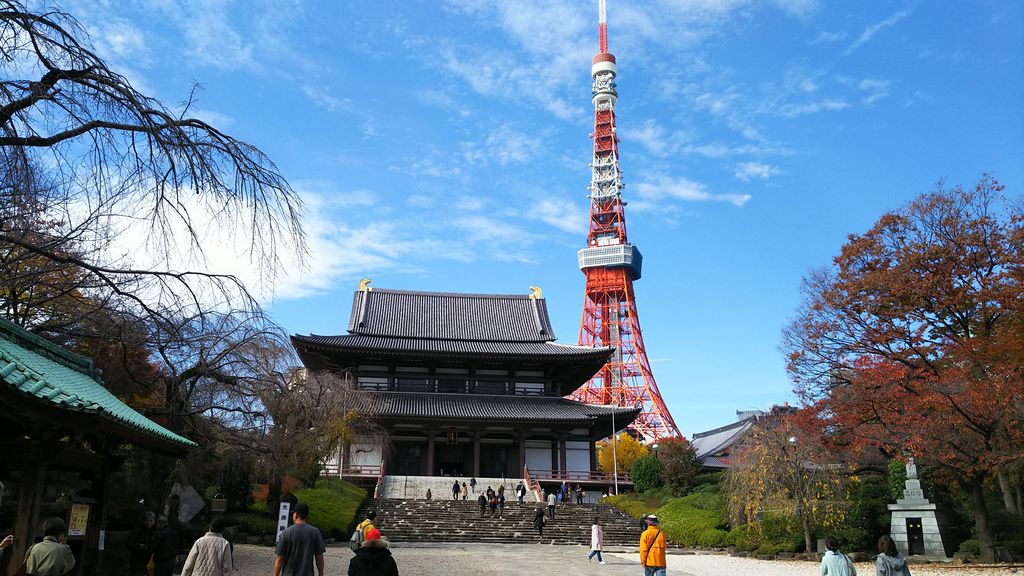
Source:Jalan Tourist Guide Zojoji
The temple was originally built near the Momijiyama (maple mountain) within the Imperial Palace precincts in 1392 and then it was relocated to its current location in 1598. It is the main temple of the Jodo sect, and also the family temple of the Tokugawa clan. There remains the temple gate, scripture house, and also the mausoleum of Hidetada and Ietsugu Tokugawa. There are buildings and hotels nearby, too.
\Reviews/
It’s a famous power spot! There’s a very nice atmosphere and it was really nice. I’d like to go again.
(Date of visit: August 2018)
The size of the Sangedatsumon Gate is impressive, and when you enter the precinct, you will see the magnificent main hall right in front of you. There are many buildings around, with plenty of attractions to see. The sight of Tokyo Tower standing behind the main hall is also fantastic.
(Date of visit: October 2018)
Address: 4-7-35 Shibakoen, Minato-ku, Tokyo 105-0011
Transportation Access (1) 5-minute walk from Toei Subway’s Shibakoen Station
(2) 3-minute walk from Toei Subway’s Onarimon Station
Other Information Sect: Jodo
Other Information Established in 1392
Phone: 03-3432-1431
Website: http://www.zojoji.or.jp/
Click for more details on Zojoji
Tokyo Daijingu
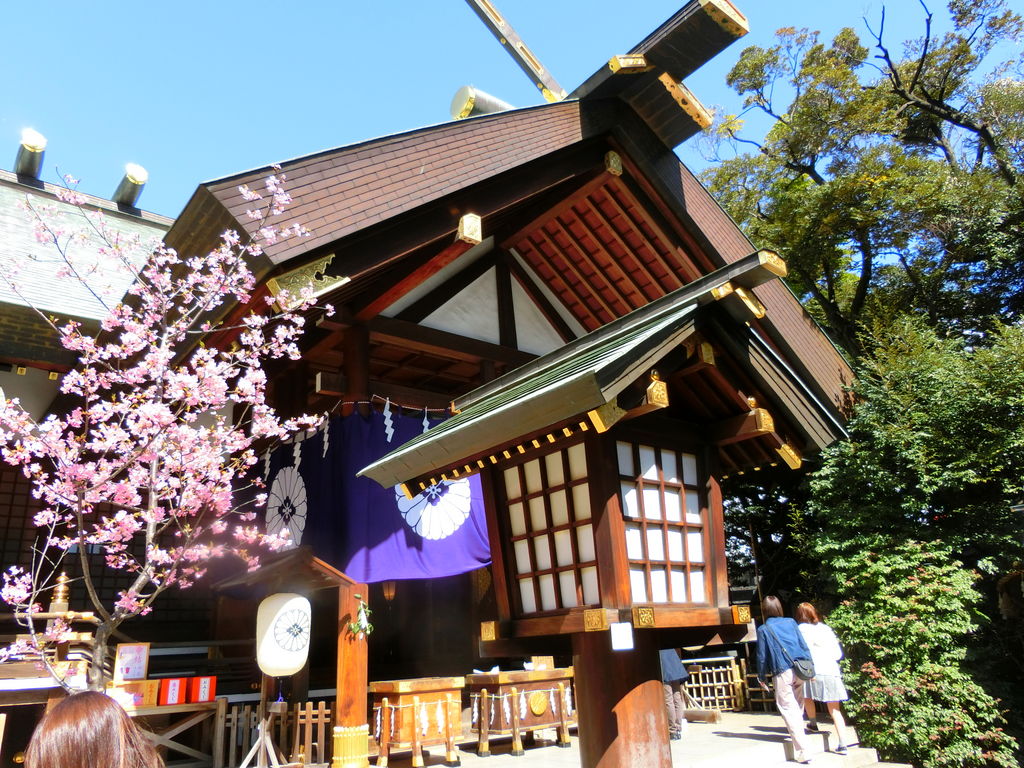
Source:Jalan Tourist Guide Tokyo Daijingu
This shrine has come to be known as a shrine that brings good matchmaking fortune, with the number of young couples seeking fortuitous blessings increasing each year. Tokyo Daijingu is also referred to as the “Ise of Tokyo” because the deities of both Ise shrines, Amaterasu no Okami and Toyoukeno no Okami, along with Yamatohime no Mikoto are enshrined here. The three gods of creation of life on heaven and earth, in other words the gods of matchmaking, are also enshrined here and they give visitors a wide range of blessings apart from matchmaking. Visitors can also pray for family safety, business prosperity, good fortune and casting away evil spirits, traffic safety, and accomplishment in school.
During the Edo period, visiting Ise Shrine was a lifelong wish of people. When a new nation was born in the Meiji period, Emperor Meiji agreed to have this shrine built in 1880 so that people could worship Ise Shrine from afar in Tokyo. It was initially built in Hibiya, so it was called “Hibiya Daijingu”. It was relocated to its current spot in 1928 after the Great Kanto Earthquake, so it came to be known as “Iidabashi Daijingu”, but it changed its name again after the war to “Tokyo Daijingu”. The current style of wedding ceremonies that are widely held in shrines today first began at this shrine. The traditional ceremony weddings in shrines continue to be handed down to younger generations.
\Reviews/
I came here to pray for good fortune since I heard the god of matchmaking is enshrined here. There were several young women also visiting.
(Date of visit: May 2018)
This is a famous power spot, and I visited with my friend to pray for happiness. There were many female visitors.
(Date of visit: February 2018)
Address: 2-4-1 Fujimi, Chiyoda-ku, Tokyo 102-0071
Transportation Access (1) 3-minute walk from JR Chuo/Sobu Line’s Iidabashi Station West Exit
(2) 5-minute walk from Subway Yurakucho Line/Namboku Line’s Iidabashi Station B2A Exit
(3) 5-minute walk from Subway Tozai Line/Oedo Line’s Iidabashi Station A4 Exit
Open Hours and Other Information: Offering time: 9:00 am – 5:00 pm
Price and Other Information: Charms from 500 yen, fortune slips from 200 yen
Other Information and Blessings: Matchmaking, family safety, good fortune and casting away evil spirits
Phone: 03-3262-3566
Website: http://www.tokyodaijingu.or.jp/guide/index.html
Click for more details on Tokyo Daijingu
Hie Shrine
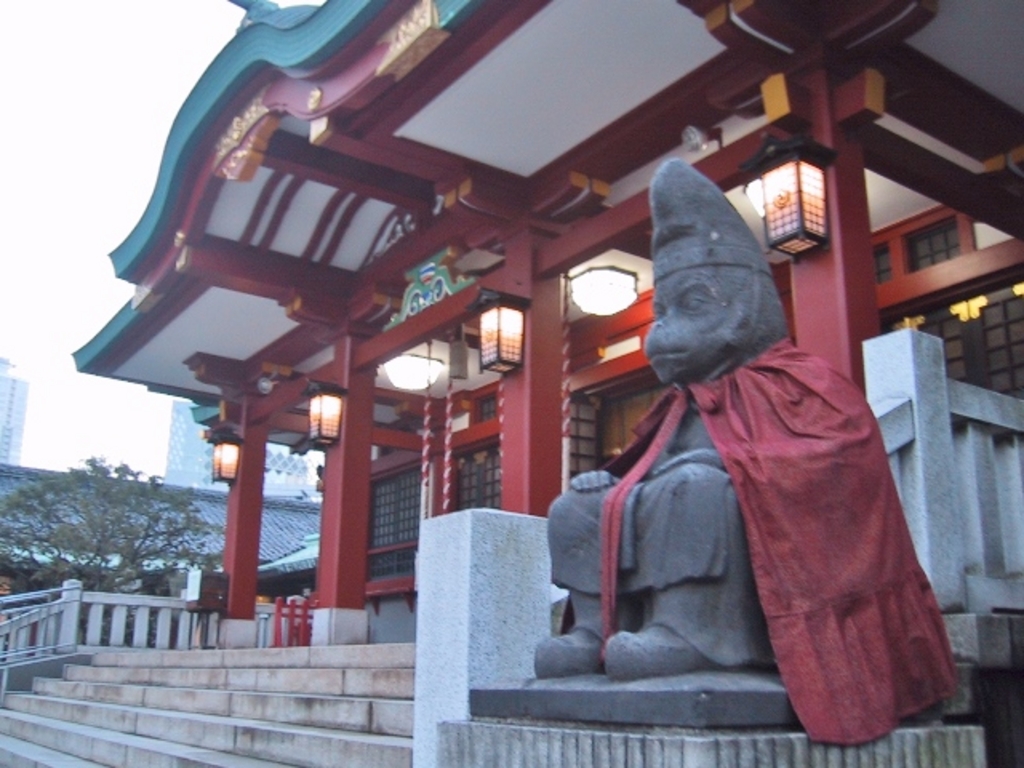
Source:Jalan Tourist Guide Hie Shrine
This was one of the grandest shrines during the Edo period. It is famous for the Sanno Festival.
\Reviews/
This is a famous power spot where there is a statue of a female monkey and her child to pray for good matchmaking. There is also a statue of a male monkey nearby, and there was a man touching it since it is believed to bring business prosperity. The luck charm symbol of Hie Shrine is a monkey, which brings good fortune.
(Date of visit: September 22, 2018)
Hie Shrine, located in Akasaka, is a famous shrine for matchmaking. It’s near Shuzenji Temple. The shrine itself is not too big, but I felt I was able to get some positive energy from being there.
(Date of visit: May 2018)
Address: Nagata-cho, Chiyoda-ku, Tokyo 100-0014
Transportation Access (1) 3-minute walk from Akasaka Station
(2) 3-minute walk from Tameike-Sanno Station
(3) 5-minute walk from Kokkai-gijido-mae Station
(4) 8-minute walk from Akasaka-mitsuke Station
Other Information Established in 830
Phone: 03-3581-2471
Website: http://www.hiejinja.net/
Ayahiro Falls
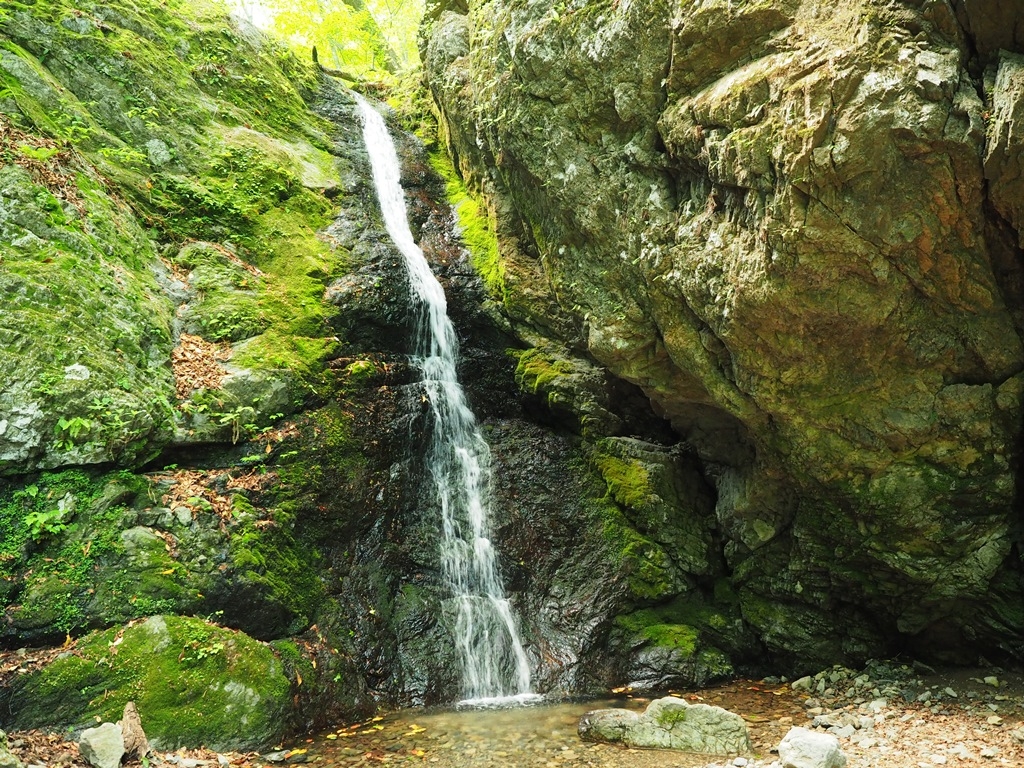
Source:Jalan Tourist Guide Ayahiro Falls
While it may be small in size, the waterfall blending in with the surrounding scenery is a beautiful sight.
\Reviews/
I visited this waterfall because I heard it was a power spot. The fall is a straight vertical drop, and the water hitting the rocks on its way down was a beautiful sight.
(Date of visit: June 2014)
This waterfall is one of the two waterfalls in Mt. Mitake, past the rock garden. The torii arches and shinto ropes gave the place a mystic atmosphere.
(Date of visit: April 18, 2015)
Address: Mitakesan, Ome-shi, Tokyo 198-0175
Transportation Access (1) 10 minutes by bus from JR Ome Line’s Mitake Station (get off at last stop “Cable Shita”)
6 minutes by cable car from Takimoto Station
80-minute walk from Mitakesan Station
Other Information Scale: 10m drop
Phone: 0428-78-9363
Click for more details on Ayahiro Falls
Senso-ji
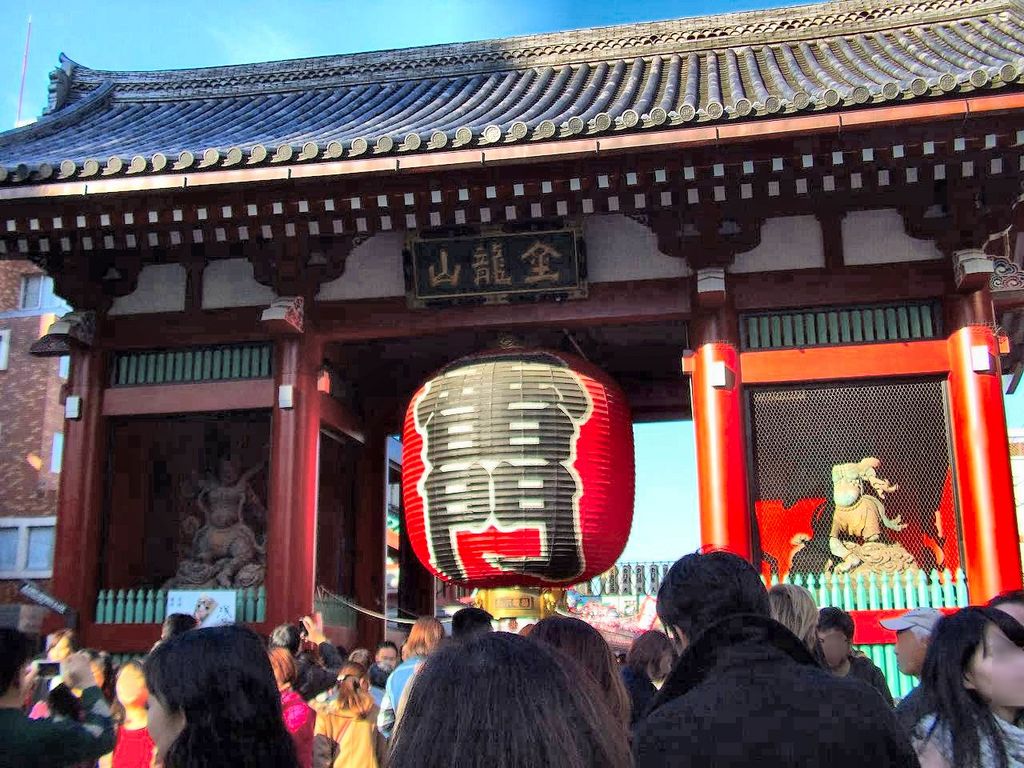
Source:Jalan Tourist Guide Senso-ji
Senso-ji is one of the most famous sightseeing spots in Tokyo, with lanterns and Nakamise shopping street creating the mood of a town from the Edo period. The current main hall was constructed in 1958 with reinforced concrete. One of the most famous spots in Asakusa where people can visit the seven gods of fortune.
\Reviews/
I don’t like crowded places, but this is a power spot I like to visit at least once a month! No matter how mentally stressed I’m feeling, this place reinvigorates me and I feel better after my visit every time!!
(Date of visit: October 2018)
The Nakamise shopping street is always lively and busy. There are always many people at Senso-ji, and it feels like visiting this temple will give you some positive energy.
Strolling in a rental kimono is also recommended!
(Date of visit: November 2017)
Address: 2-3-1 Asakusa, Taito-ku, Tokyo 111-0032
Transportation Access (1) Walk from Asakusa Station
Barrier-Free Facilities Accessible for visitors on wheelchairs EV: Yes
Diaper changing table: Available
Other Information Established in 628
Phone: 03-3842-0181
Click for more details on Senso-ji
Imado Shrine
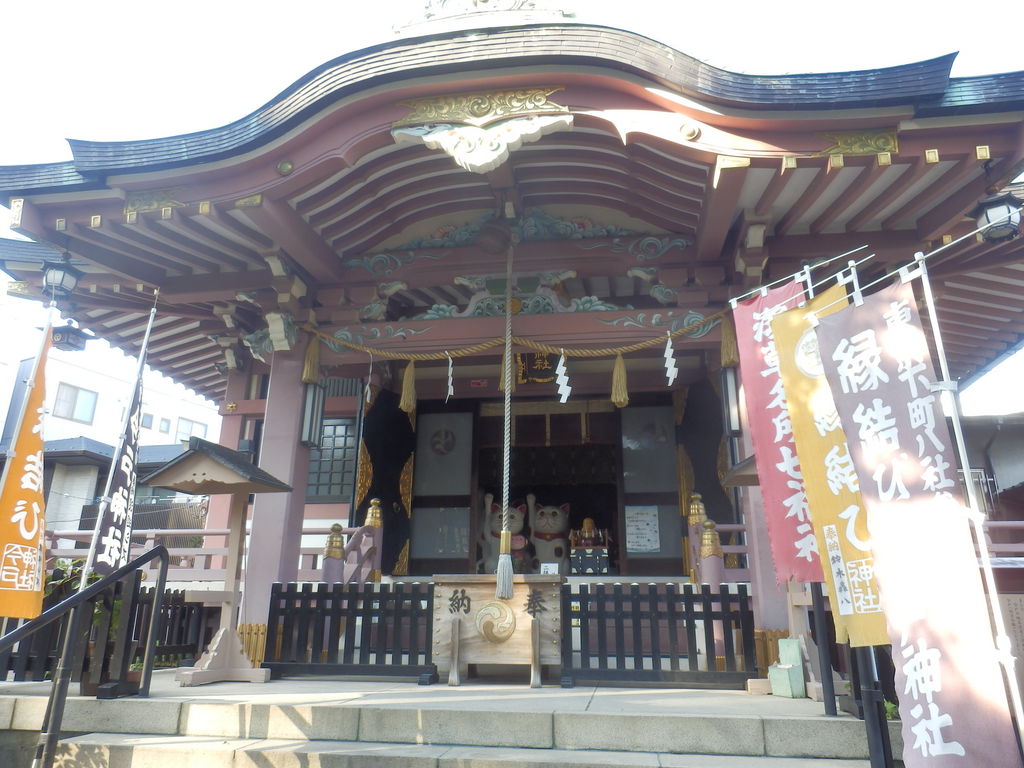
Source:Jalan Tourist Guide Imado Shrine
The deities of Imado Shrine are “Izanagi no Mikoto” and “Izanami no Mikoto”, which are the first gods to have been married in Japanese mythology. Known to be a power spot for matchmaking, many female visitors come to this shrine. The place has many symbols of cats such as the fortune cat signboards and the large fortune cat at the main building of the shrine. They also appear everywhere in the shrine grounds, including in the stamp book of the shrine and in gifts and offerings. The ema (votive tablet) here is round, which is quite unusual. The reason for this design is a play on words of the Japanese word “en”, which can mean both matchmaking and round. This is also the place where Soshi Okita of the famous Shinsengumi special force died, and also one of Asakusa’s famous spots for the seven gods of fortune (Fukurokuju, or god of prosperity). It is an approximately 30-minute walk to Skytree, so it is a recommended spot to visit on a sightseeing tour of Asakusa.
\Reviews/
I came because I heard that Imado Shrine brings good luck for matchmaking. I bought the ema wooden tablet with a picture of a lucky cat couple because it was adorable.
(Date of visit: September 2018)
This is a shrine where cats are worshipped, and so there are many symbols as well as objects of lucky cats everywhere. There are also real cats, which is kind of relaxing. There are lucky charms for pets that are sold, while many people visit on holidays for the shrine stamp.
(Date of visit: September 2018)
Address: 1-5-22 Imado, Taito-ku, Tokyo 111-0024
Transportation Access (1) 15-minute walk from Asakusa Station on various railway lines
(2) Toei Bus: Take the bus from Asakusa bound for Minami Senju, get off at Asakusa 7-chome and then it will be a 5-minute walk from there/ Get off at Riverside Sports Center and then it will be a 2-minute walk from there
(3) Taito Ward Loop-line Bus: Get on the Kita Megurin (4) bus, get off at Riverside Sports Center and then it will be a 2-minute walk from there
Open Hours Visiting Time: Shrine Office is open 9:00 am – 5:00 pm
Parking area: None
Phone: 03-3872-2703
Click for more details on Imado Shrine
Anamori Inari Shrine

Source:Jalan Tourist Guide Anamori Inari Shrine
\Reviews/
Anamori Inari Shrine is one of the shrines in the Haneda Inari pilgrimage and is said to bring luck for flight safety, family safety, and business prosperity. I was able to take my time and pray on my visit. (Date of visit: October 2018)
Walk through the rows of the torii arches at Anamori Inari Shrine and it will feel like you have cleansed your mind of worldly thoughts and have been given divine power.
(Date of visit: July 2018)
Address: 5-2-7 Haneda, Ota-ku, Tokyo 144-0043
Phone: 03-3741-0809
Website: http://anamori.jp/
Kongoji (Takahata Fudoson)
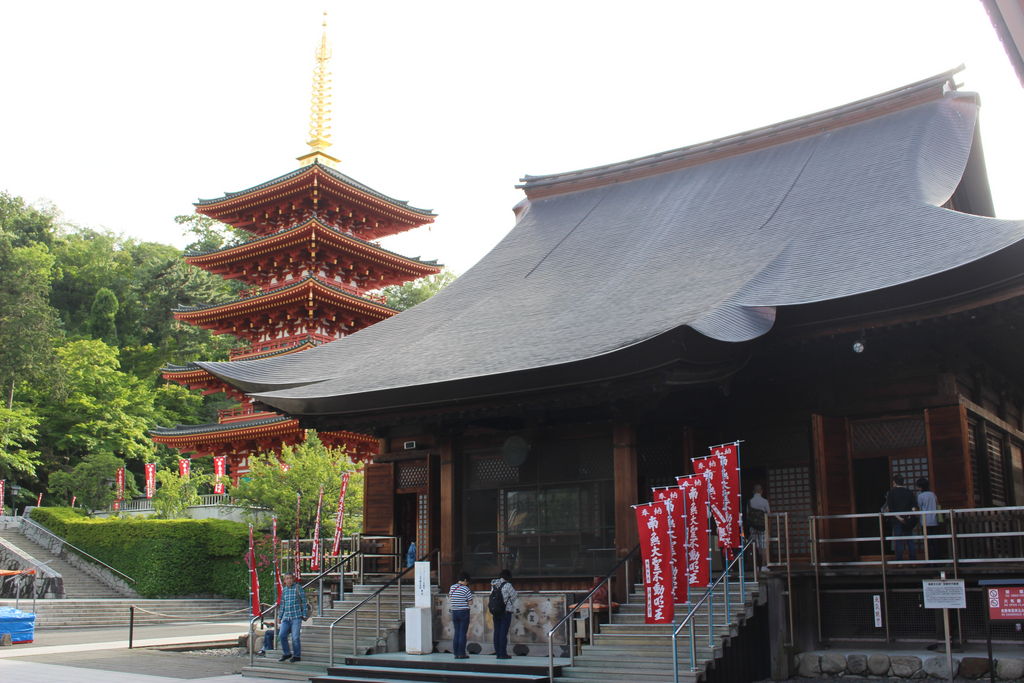
Source:Jalan Tourist Guide Kongoji (Takahata Fudoson)
This is one of the three major Fudoson temples in the Kanto region, and the quasi-head temple of the Chizan school of the Shingon sect. It is one of the oldest temples in Kanto region that is said to have been built during the Taiho period. Along with important cultural properties such as the Fudodo Hall, Niomon Gate, and Joroku Fudo-Sanson Statue, there are many other temple treasures here. It is also known as the family temple of Toshizo Hijikata, and in the precinct, there is also the “Junsetsu Ryoyu no Hi”, a memorial monument built in the Meiji period that honors Isami Kondo and Toshizo Hijikata.
\Reviews/
I heard the impressive Niomon Gate and Fudodo Hall are important cultural properties, and the magnificent statue of Toshizo Hijikata in the precinct is wonderful.
It was the season of hydrangeas when I visited previously in June, and there were so many hydrangeas in full bloom along the pilgrimage path of the 88 sacred spots within the precinct.
(Date of visit: February 2018)
This is a temple that is famous for praying for traffic safety.
I visit here every year to get charms for traffic safety.
The area inside the precinct is very quiet. It’s a sacred place that soothes my mind.
(Date of visit: December 2017)
Address: 733 Takahata, Hino-shi, Tokyo 191-0031
Transportation Access (1) Keio Line: 2-minute walk from Takahatafudo Station
(2) Tama Monorail: 5-minute walk from Takahatafudo Station
Open Hours Visiting time: 9:00 am – 4:00 pm
Price Adults: 300 yen, anterior hall entrance fee; Dainichido Hall entry fee is 200 yen for adults
Other Information It was established before the 9th century, and there are theories that it was build during the Taiho period (701-704) and a legend that it was founded by the Buddhist priest, Gyoki Bosatsu
Phone: 042-591-0032
Website: http://www.takahatafudoson.or.jp/
Click for more details onKongoji (Takahata Fudoson)
Kumano Shrine
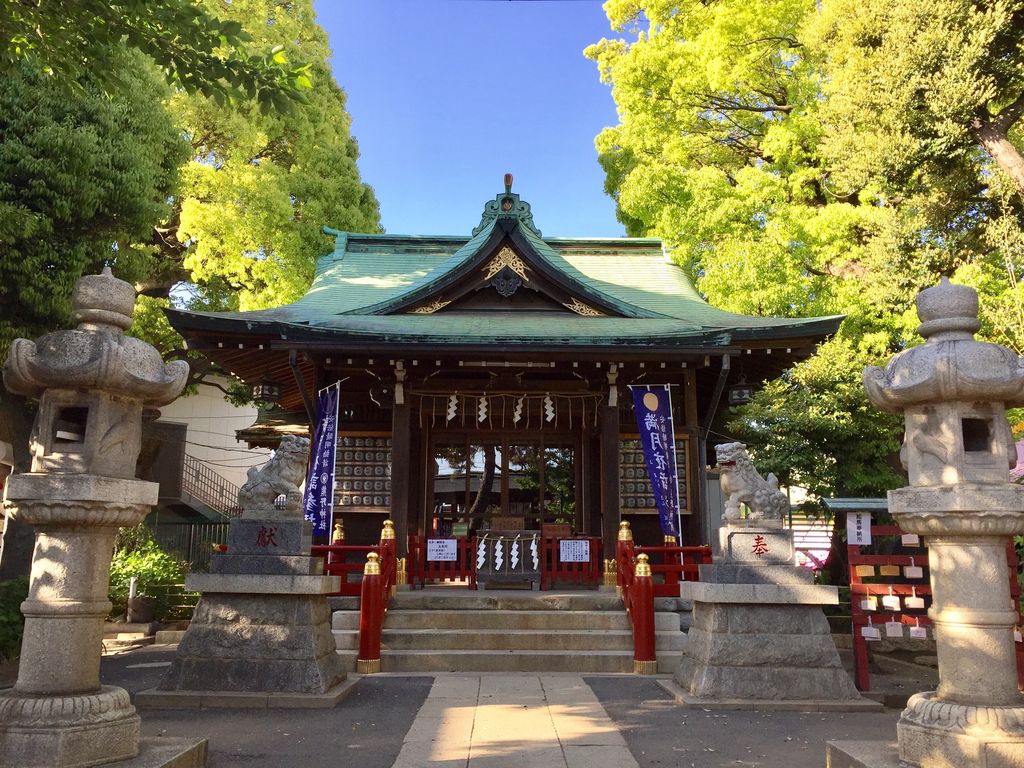
Source:Jalan Tourist Guide Kumano Shrine
The enshrined god is Izanagi no Okami, and the object of the enshrined deity is a staff made of polished stone, which is considered to be an important archeological artifact (not presented to the public as it is the shrine treasure). The third Tokugawa Shogun Iemitsu and 8th Tokugawa Shogun Yoshimune visited here to pray whenever they went hunting with a falcon. The shrine also has ties with the famous diviner, Abe no Seimei, and at that time, the shape of the precinct was a pentagon. There is a copper 5-story pagoda within the precinct.
\Reviews/
I visited here because I heard it was a power spot. It was a magnificent shrine with a five-story pagoda in the precinct. I’d like to go again.
(Date of visit: September 2015)
The shrine is built on a sandbank in the middle of a meandering river.
The topography makes it a place where power easily gathers, which makes it a famous power spot.
(Date of visit: July 2016)
Address: 8-44-31 Tateishi, Katsushika-ku, Tokyo 124-0012
Transportation Access (1) 13-minute walk from Keisei Line’s Tateishi Station
Other Information Established during the Choho period (999-1003)
Click for more details on Kumano Shrine
Yoyogi Hachiman Shrine

Source:Jalan Tourist Guide Yoyogi Hachiman Shrine
\Reviews/
Yoyogi Hachiman Shrine has a very nice and calm atmosphere, and I was able to quietly visit the place. It seems like it is also a power spot.
(Date of visit: October 2018)
There is Meiji Shrine and Yoyogi Park nearby, so it feels slightly small compared to these places. However it’s very quiet considering that is located in a residential district with the Loop Expressway No. 6 nearby. The shrine stands on a small hill surrounded by trees, so it’s very relaxing. It is a traditional temple built in the Kamakura period, and it is apparently famous for being a power spot.
(Date of visit: September 2018)
Address: 5-1-1 Yoyogi, Shibuya-ku, Tokyo 151-0053
Transportation Access (1) 5-minute walk from Yoyogi Hachiman Station (Odakyu Line)
Other Information Established in 1212
Phone: 03-3466-2012
Website: http://www.yoyogihachimangu.or.jp/
Masakadozuka Tomb
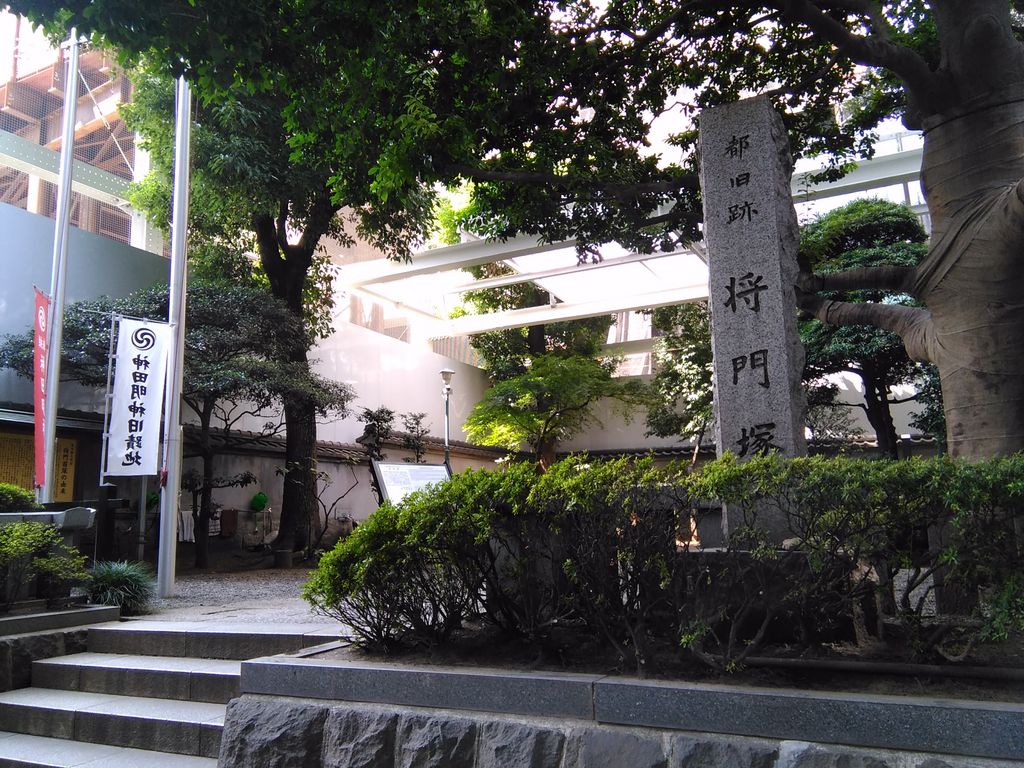
Source:Jalan Tourist Guide Masakadozuka Tomb
There are many old sites related to Taira no Masakado, a famous samurai in Japanese history, and this is one of the most legendary in Tokyo. There is absolutely no historical proof, but it is believed that this burial mound that existed at this spot had some tie with Masakado. The monument was reconstructed recently since the previous one had been damaged.
\Reviews/
This is the burial mound for the severed head of Taira no Masakado. Taira no Masakado is considered to be one of the three great vengeful spirits in Japan. This place is known as one of the most famous power spots in Tokyo, and so many tourists visit the place.
(Date of visit: August 2018)
This is the burial mound for the severed head of Taira no Masakado. It’s a famous power spot.
There were many people visiting but it was quiet.
There is a sacred atmosphere to the place.
(Date of visit: January 2018)
Address: Otemachi, Chiyoda-ku, Tokyo 100-0004
Other Information Constructed during the Heian period
Toyokawa Inari Tokyo Betsuin

Source:Jalan Tourist Guide Toyokawa Inari Tokyo Betsuin
This branch temple enshrines the separate spirit of the Toyokawa Inari god, which was worshipped daily by Lord Ooka Echizen Tadasuke during the Edo period.
It was relocated in 1887 from the Ooka residence in Akasaka Hitotsugi to its current location, and became a direct branch temple of Toyokawakaku Temple in Aichi prefecture.
\Reviews/
This is a traditional temple located next to Akasaka Palace, easy to spot for its bright red lanterns and banners. Despite being in the heart of the city it’s very quiet, and not too crowded since it was a weekday. The temple also has heart shaped ema votive tablets since it is also considered to be a power spot for romance, and so I also prayed for luck.
(Date of visit: November 2014)
I went to pray for business prosperity. It can be easily accessed on foot from Akasaka Mitsuke Station. The precinct was much more spacious than I imagined, with many gods that seemed to bring good fortune. I heard it’s also possible to visit the seven gods of fortune.
Many people from the entertainment industry also seem to visit since the temple is also known to worship the god of entertainment.
(Date of visit: February 2015)
Address: 1-4-7 Akasaka, Minato-ku, Tokyo 107-0051
Transportation Access (1) 5-minute walk from Ginza/Marunouchi Line’s Akasaka Mitsuke Station
(2) 5-minute walk from Yurakucho/Hanzomon/Namboku Line’s Nagatacho Station
Other Information Established during the Edo period
Phone: 03-3408-3414
Gosha Shrine

Source:Jalan Tourist Guide Gosha Shrine
One of the places in the country where the five Myo-O god statues are gathered.
\Reviews/
Despite being located in Tokyo, the shrine is surrounded by lots of nature and there is a sacred atmosphere.
The shrine is quite small, but I felt I received a lot of positive energy.
(Date of visit): May 2017)
It’s a shrine with an impressive atmosphere and surrounded by a magnificent natural environment.
The place is quite small, but I feel I was able to receive a lot of energy.
(Date of visit: October 2016)
Address: Henbori, Hinoharamura, Nishitama-gun, Tokyo 190-0222
Transportation Access (1) 50 minutes by bus from Musashi-Itsukaichi Station
Other Information Established during the Heian period
Phone: 042-598-0069
Shiba Daijingu

Source:Jalan Tourist Guide Shiba Daijingu
The main enshrined deities at Shiba Daijingu are Amaterasu no Okami (inner shrine) and Toyouke no Okami (outer shrine), which are the enshrined deities of the Ise Shrine. This is a shrine with an important heritage, built long ago in the Heian period (1005) during the reign of Emperor Ichijo.
\Reviews/
Famous for bringing matchmaking fortune, the shrine is frequented by many young couples. It is an important power spot located in the city. While the shrine is surrounded by buildings, the area is actually quite spacious and large.
(Date of visit: February 2018)
This is a shrine with a heritage spanning 1,000 years when combined with the time before it was relocated.
It’s famous for bringing good fortune for matchmaking and also business prosperity.
Maybe that’s why there were many young men and women visiting.
It’s an impressive and large shrine surrounded by buildings.
(Date of visit: July 20, 2018)
Address: 1-12-7 Shiba Daimon, Minato-ku, Tokyo 105-0012
Transportation Access (1) 6-minute walk from JR Hamamatsucho Station (Hamamatsucho Station/Walk/6 minutes, Toei Oedo Line and Asakusa Line’s Daimon Station/Walk/ 3 minutes)
(2) 3-minute walk from Toei Oedo Line/Asakusa Line’s Daimon Station
Other Information Established in 1005
Phone: 03-3431-4802
Website: http://www.shibadaijingu.com/
Click for more details on Shiba Daijingu
Atago Shrine
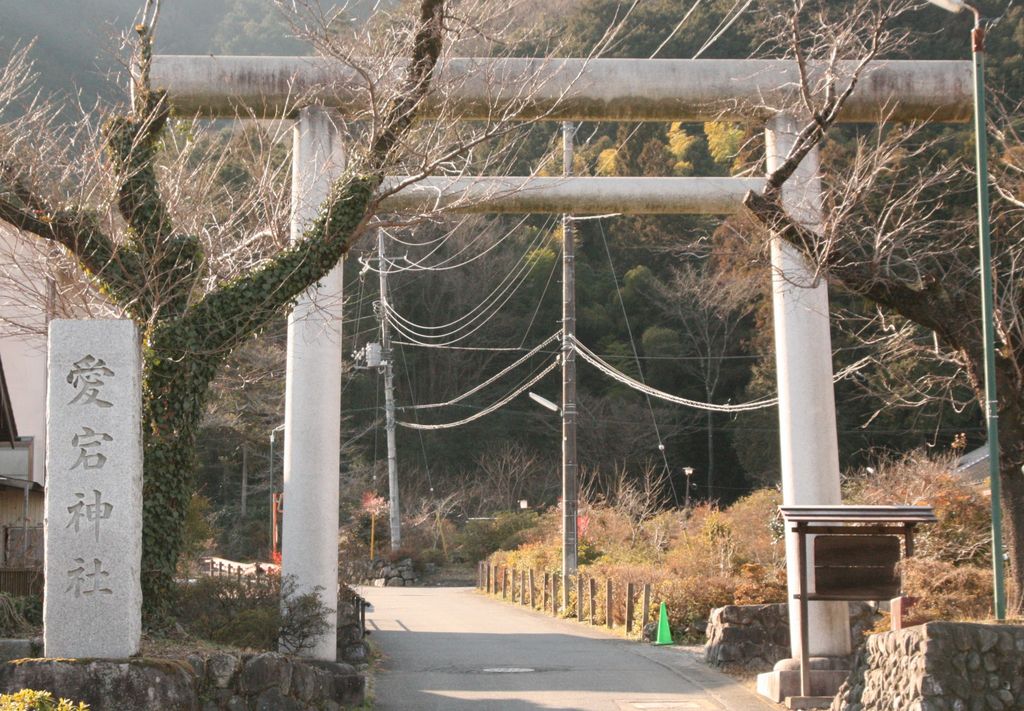
Source:Jalan Tourist Guide Atago Shrine
This is an old shrine that was built for protection of the Karakai Castle, which belonged to the Mita family. Its main shrine is located on top of Atago Hill. There are many cherry trees and azalea plants that grow within the precinct of the shrine, and so the shrine is also referred to as “azalea hill”.
\Reviews/
This is a famous and historic shrine that is also known to be a power spot. The main building is quiet and comforting, so it was very nice. (Date of visit: October 2018)
Atago Shrine is famous for being a power spot. The long staircase was quite tough to climb, but I think the spot gives you good fortune.
(Date of visit: October 2018)
Address: 1-944 Yugimachi, Ome-shi, Tokyo 198-0064
Transportation Access (1) 25-minute walk from Futamatao Station
Other Information Period established: Unknown
Phone: 0428-20-0011
Susaki Shrine

Source:Jalan Tourist Guide Susaki Shrine
The shrine is also known as the shrine of the Susaki Benzaiten.
\Reviews/
I visited Susaki Shrine. It’s located in a place where you can feel the energy from nature. I paid my respects, took a walk around the area, and it felt good.
(Date of visit: July 2015)
This is a famous power spot, and there’s a long staircase leading to the shrine.
The view of the sea from the top is very beautiful.
(Date of visit: June 2014)
Address: 6-13-13 Kiba, Koto-ku, Tokyo 135-0042
Transportation Access (1) 2-minute walk from Kiba Station
Other Information Established in 1700
Click for more details on Susaki Shrine
Koami Shrine

Source:Jalan Tourist Guide Koami Shrine
The shrine has attracted many worshippers throughout the ages for its god of good fortune, business prosperity, relieving diseases, and the Tokyo Zeniarai (washing money for good fortune) Benten god.
Many people come to see the large portable shrine paraded for the main festival around end of May each year, and there is also the famous Doburoku Festival at the end of November.
The main shrine hall and performance hall are also designated as tangible cultural properties of the ward.
\Reviews/
I visited this shrine because I heard it was a famous power spot. It had a very relaxing atmosphere and I felt it would bring some good fortune.
(Date of visit: August 2018)
The shrine is also famous for worshipping the Zeniarai (washing money for good fortune) Benten god. It is also said to be a fortuitous shrine for money, good luck, casting away evil spirits, and so many people visit the place. There are times when the shrine is very crowded with visitors. The main hall is very beautiful, and the architecture as well as sculptures are also worth taking a look at.
(Date of visit: August 2018)
Address: 16-23 Nihonbashi Koami-cho, Chuo-ku, Tokyo 103-0016
Transportation Access (1) Walking distance from Ningyocho Station (Toei Asakusa Line/Tokyo Metro Hibiya Line)
Website: http://www.koamijinja.or.jp/
* The information contained in this article is valid as of November 2018
* Information posted here may differ from the actual state. Please obey actual traffic regulation signals/signs when driving.

Let’s enjoy Japan!
We present various information that could prove handy to travelers when they explore Japan’s 47 prefectures, including spots that have been generating a lot of buzz, fun events and delicious food!



